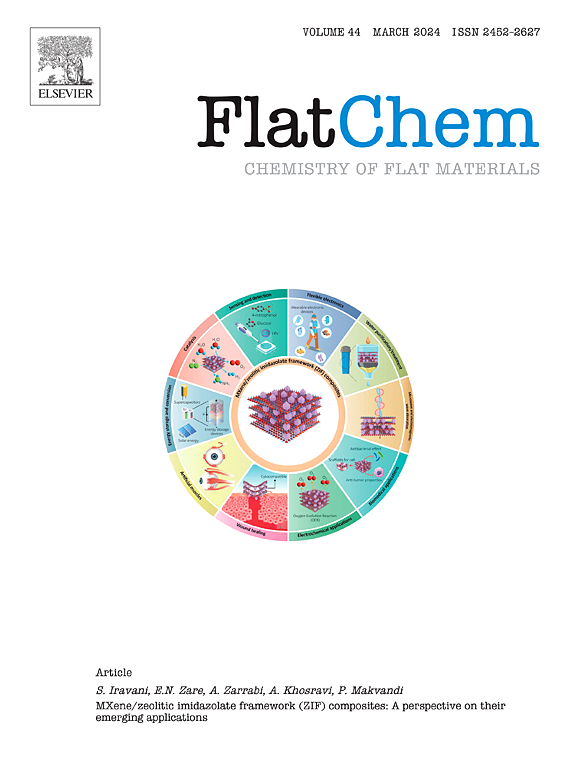碳足迹的战略性衰减:探索超薄结构光催化剂用于二氧化碳还原的令人兴奋的潜力
IF 6.2
3区 材料科学
Q2 CHEMISTRY, PHYSICAL
引用次数: 0
摘要
减少二氧化碳排放是一个具有挑战性和紧迫性的问题,需要立即解决。虽然有许多方法可以控制二氧化碳,但最可靠的解决方案是将二氧化碳转化为有价值的碳氢化合物产品。为了实现这一目标(二氧化碳减排),研究人员一直致力于合成具有独特催化特性的超薄结构材料。然而,我们的评估表明,大多数报告都不清楚他们声称的催化效率。由于报告方案的模糊性,许多年轻的研究人员指出了许多重要的问题。这就是报道的催化效率存在巨大不确定性的原因。本研究综述了超薄结构光催化剂在CO2还原中的最新研究进展。这项工作强调了重要的催化剂,已经过度使用的催化转化为有用的产品二氧化碳。例如,各种超薄光催化剂,如一维纳米管、棒、线和带、二维板、纳米片和三维结构已经被评估和讨论。此外,我们还评估了通常用于提高效率的重要科学技术和方法。这些方法包括结构工程、掺杂剂的使用、空位的作用、活性关系、晶体面缺陷、结构改变和异质结的发展。所有上述的方法都被用来加强二氧化碳的减少,使其成为有用的替代品。这篇综述为研究靶向和超薄结构光催化剂的读者提供了全面的概述。此外,本研究评估了用于二氧化碳减排的重要策略。在评估和评价的基础上,本研究有望为类似领域和应用领域的读者和研究人员提供先进的信息。本文章由计算机程序翻译,如有差异,请以英文原文为准。

Strategic attenuation of carbon footprint: Exploring the exciting potential of ultrathin structured photocatalysts for CO2 reduction†
Reducing CO2 emission is a challenging and pressing issue that needs to be resolved immediately. Although, there have been reported many approaches to control on CO2, but most reliable solution is conversion of CO2 into valuable hydrocarbon products. In order to achieve this goal (CO2 reduction), researchers have focussed to synthesize ultrathin structured materials having unique catalytic chracteristics. However, our assessment indicated that most of the reports are unclear regarding their claim of catalytic efficiencies. Due to ambiguity in reported protocols, numerous significant concerns have been pointed out by many young researchers. This is the reason, there is huge uncertainty regarding the reported catalytic efficiencies. Current study has explored the recent and progressive research on ultrathin structured photocatalysts for CO2 reduction. This work highlights the important catalysts that have been excessively used for catalytic conversion of CO2 into useful products. For example, various kinds of ultrathin photocatalysts like 1D nanotubes, rods, wires and ribbons, 2D plates, nanosheets, and 3D architectures have been evaluated and discussed. Additionally, we have evaluated the important scientific techniques and methodologies that have been generally used to obtain better efficiencies. These approaches include structural engineering, use of dopants, role of vacancies, activity relationships, defects in crystal facets, structural alteration and developments of heterojunctions. All aforementioned approaches have been utilized to enhance CO2 reduction into its useful substitutes. This review provides a comprehensive overview for the readers working on targeted and ultrathin structured photocatalysts. Moreover, this study evaluates the significant strategies used for CO2 abatement. On the basis of assessment and evaluation, it has been concluded that current study holds promise to deliver advanced information for the readers and researchers working in similar areas and applications.
求助全文
通过发布文献求助,成功后即可免费获取论文全文。
去求助
来源期刊

FlatChem
Multiple-
CiteScore
8.40
自引率
6.50%
发文量
104
审稿时长
26 days
期刊介绍:
FlatChem - Chemistry of Flat Materials, a new voice in the community, publishes original and significant, cutting-edge research related to the chemistry of graphene and related 2D & layered materials. The overall aim of the journal is to combine the chemistry and applications of these materials, where the submission of communications, full papers, and concepts should contain chemistry in a materials context, which can be both experimental and/or theoretical. In addition to original research articles, FlatChem also offers reviews, minireviews, highlights and perspectives on the future of this research area with the scientific leaders in fields related to Flat Materials. Topics of interest include, but are not limited to, the following: -Design, synthesis, applications and investigation of graphene, graphene related materials and other 2D & layered materials (for example Silicene, Germanene, Phosphorene, MXenes, Boron nitride, Transition metal dichalcogenides) -Characterization of these materials using all forms of spectroscopy and microscopy techniques -Chemical modification or functionalization and dispersion of these materials, as well as interactions with other materials -Exploring the surface chemistry of these materials for applications in: Sensors or detectors in electrochemical/Lab on a Chip devices, Composite materials, Membranes, Environment technology, Catalysis for energy storage and conversion (for example fuel cells, supercapacitors, batteries, hydrogen storage), Biomedical technology (drug delivery, biosensing, bioimaging)
 求助内容:
求助内容: 应助结果提醒方式:
应助结果提醒方式:


